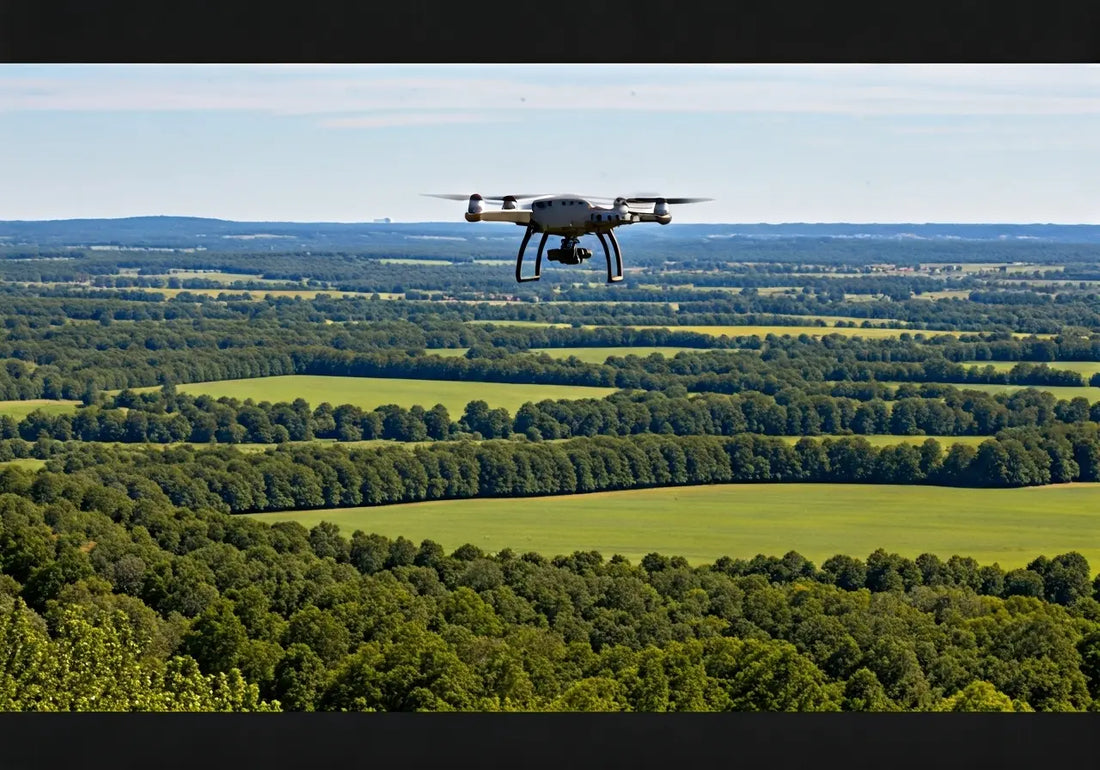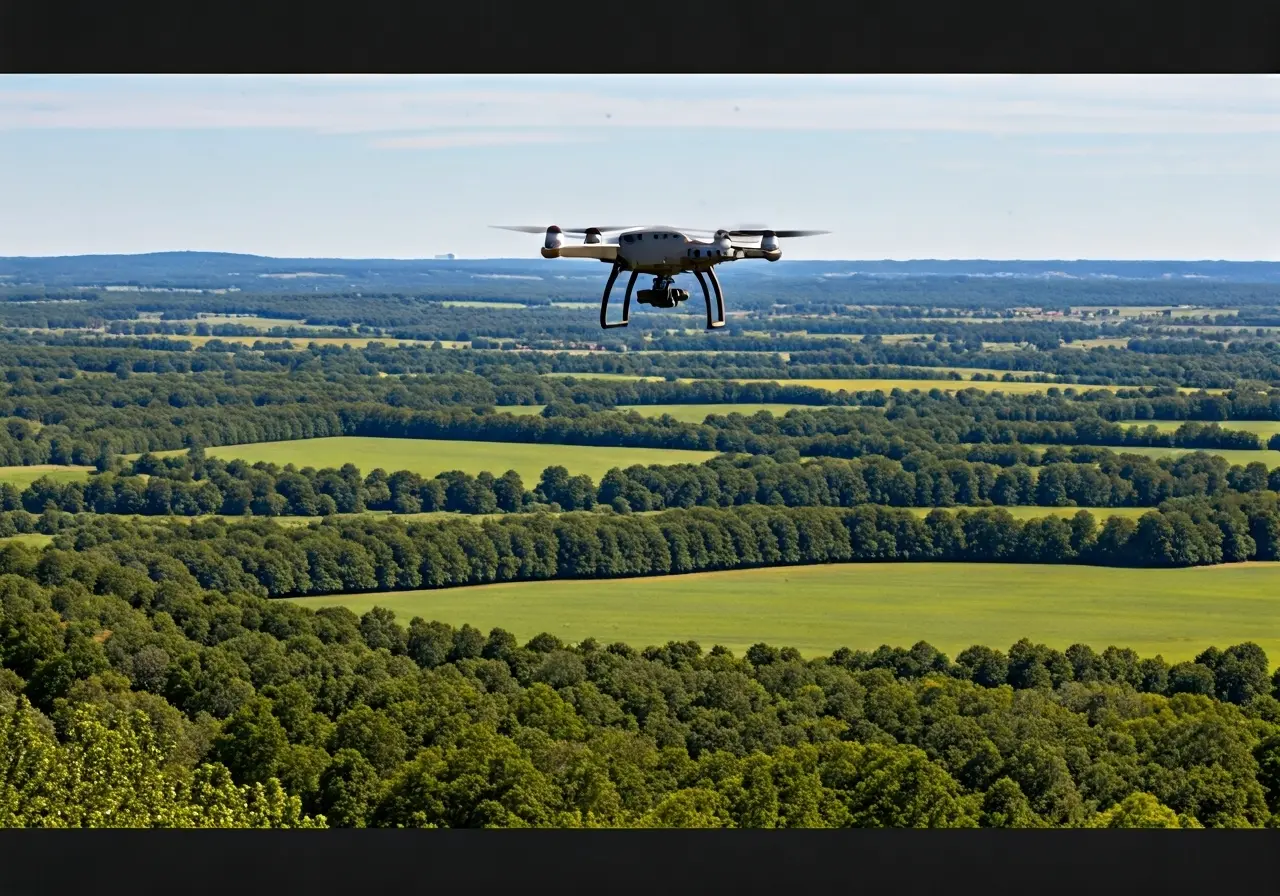
Understanding the Impact of Agriculture Drone Solutions on Modern Farming
Share
In recent years, agriculture has seen a technological transformation with the integration of drone solutions. These high-tech tools are reshaping farming practices, offering innovative solutions for age-old challenges. Let’s dive into how these impressive gadgets are influencing modern farming in ways that are efficient, sustainable, and groundbreaking.
The Role of Drones in Precision Agriculture
Precision agriculture leverages technology to ensure crops and soil receive exactly what they need for optimal health and productivity. Drones play a crucial role in this by providing real-time data and identifying areas that require attention, thus maximizing yield and minimizing waste. These innovative tools are equipped with sophisticated sensors and cameras that hover over vast fields, scanning them with remarkable speed and accuracy. By doing so, they enable farmers to spot issues much earlier than traditional methods allow. This proactive approach supports better crop management and healthier harvests, while also conserving essential resources.
The significance of precision agriculture cannot be overstated. It’s a paradigm shift that redefines the way farmers engage with their land. Rather than relying on generalized estimates and practices, precision agriculture allows for tailored strategies that meet the specific needs of each plot of land. This granular approach is not only more efficient but also beneficial for the environment. By utilizing agriculture drone solutions, farmers can reduce their reliance on chemical inputs, fostering a more sustainable and eco-friendly agricultural practice. This change is essential in addressing the dual challenge of increasing global food demand while minimizing environmental degradation.
Enhancing Crop Monitoring and Analysis
Drones equipped with advanced sensors and imaging capabilities enable farmers to monitor their fields extensively. This technology allows for the early detection of pests, diseases, and nutrient deficiencies, providing crucial insights that help in swift decision-making and strategic intervention. For instance, by capturing high-resolution images and thermal data, drones can identify areas suffering from heat stress or moisture deficit, which are common early indicators of potential problems in crop health.
With this information at their fingertips, farmers can apply targeted treatments that prevent the spread of diseases and other issues before they become widespread. This proactive management not only boosts productivity and crop quality but also saves costs and reduces the environmental impact of farming practices. Moreover, the continuous stream of data allows for predictive analysis, enabling farmers to preemptively prepare for seasonal changes or pest migration, ensuring crop resilience and long-term agricultural success.
This technology-driven approach to agriculture is making crop monitoring more precise and reliable. As drone technology continues to evolve, its capabilities in image analysis and data collection are expected to become even more refined, providing farmers with an ever-increasing array of tools to optimize their operations and maximize yields. It’s a futuristic approach that is rapidly becoming a necessity in modern farming as global agricultural challenges intensify.
Optimizing Resource Management and Efficiency
One of the standout benefits of agriculture drone solutions is the efficient use of resources. By accurately mapping and analyzing farm data, drones help farmers use water, fertilizers, and pesticides more efficiently, which not only reduces costs but also lessens environmental impact. The precision with which drones assess a field’s needs allows for precise application, minimizing waste and ensuring that crops absorb the maximum benefit from each input.
In particular, drones can map soil moisture levels with great accuracy, ensuring that irrigation systems only deliver water where and when it’s needed. This not only conserves water, a precious commodity in many farming regions, but also helps in preventing waterlogging and the detrimental effects of over-irrigation. Similarly, by helping to pinpoint areas that need attention, drones ensure that fertilizers and pesticides are not over-applied, curbing runoff and the pollution of nearby water sources.
Improving Safety and Reducing Labor Costs
Drones minimize the need for manual inspections, which can sometimes be risky and labor-intensive. By taking over tasks such as surveying and monitoring, drones reduce labor costs and improve safety by allowing farmers to understand their farm’s conditions from a distance. Instead of walking miles through potentially hazardous fields, farmers can deploy drones to cover the same area in a fraction of the time.
This not only protects farm workers from the toll physical labor takes, but it also allows them to focus on more strategic tasks that require human judgment and expertise. Moreover, drones can access difficult terrains that are dangerous or impossible for people to navigate, such as steep hillsides or waterlogged fields, further enhancing the safety protocols in place on many farms. As a result, the integration of drones into agricultural operations represents a step forward in creating a more sustainable and humane labor ecosystem in farming communities.
The Future of Farming with Drone Technology
Looking ahead, the use of drones in agriculture is poised to expand even further. With continuous advancements in drone technology, they are becoming more accessible and affordable for farmers of all scales, promising an era of smart farming that enhances productivity while ensuring environmental sustainability. As drone capabilities grow, so too does their impact on agricultural practices, helping to build a more resilient food production system.
The future holds exciting possibilities, from autonomous drones capable of managing entire farming operations to innovations in data collection and analysis that could provide unprecedented insights into crop management. As more farmers adopt drone technologies, the collective knowledge and experience will lead to even more refined techniques and solutions that can be shared across the industry. This not only bodes well for food security and farmer livelihoods but could also usher in a new age of sustainability in agriculture, a vital goal as we face climate change and a growing global population.
Revolutionizing Farming: The Future with Drones
To sum up, agriculture drone solutions are significantly altering the landscape of modern farming. They offer efficiency, sustainability, and precision that were previously unimaginable. As technology continues to advance, the potential for these drones to help farmers thrive is immense, promising a future where farming is smarter and more sustainable.

